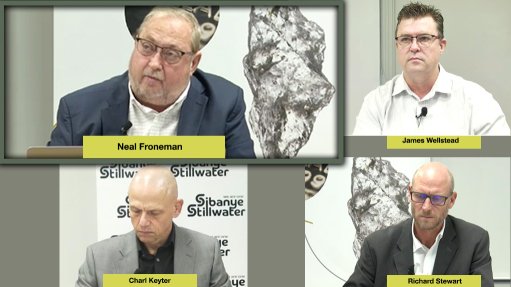Energy storage a short-term solution
Energy storage, and how it can be integrated into the energy distribution mix and contribute to electricity stability in South Africa, needs to be considered as a short-term solution, says solar energy equipment supplier ZRW Mechanika MD Kamalluddien Parker.
South Africa needs to consider mitigating short-term risks while meeting medium- and long-term challenges to establish a just energy transition that benefits its citizens.
Flexibility and resilience in power distribution is becoming increasingly important owing to the rise of variable renewables and the rising load from power electronics, manufacturing facilities, heat pumps, and the charging of electric vehicles.
Parker explains that as solar photovoltaic (PV) is a time-of-day energy source, it has limits. However, energy storage enables electricity to be saved for later – when and where it is most needed. This results in efficiencies and improved capabilities of the electric grid, including reduced greenhouse gas (GHG) emissions.
Globally, only 3% of power capacity is being stored. Energy storage capacity will need to triple by 2050 to limit global warming to below 2 ºC above preindustrial levels, increase renewable energy use and reduce reliance on fossil fuels.
Battery energy storage systems (BESS) are the primary candidate for dealing with electrical grid flexibility and resilience.
“Batteries are of particular interest at small and medium scales owing to their relatively high energy density, lack of geographic restrictions, minimal noise, and low maintenance requirements,” Parker explains.
BESS offer peak shaving of both import from the grid and export from embedded renewables. BESS provide backup power, delay infrastructure reinforcements, improve power quality, and increase self-consumption of embedded renewables.
Increasingly ZRW Mechanika has been involved in design and installation of BESS alongside grid-tied solar systems to support companies from 10 kWh to 4 MWh. This assists these companies with peak shaving through the strategy of avoiding peak demand charges on the electrical grid by quickly reducing power consumption during intervals of high demand.
Peak shaving is accomplished by switching off equipment or using energy storage such as on-site BESS. The objective of peak shaving is to eliminate short-term spikes in demand and reduce overall cost associated with usage of electricity.
Parker explains that the transition to electric mobility, the surge in the number of electric vehicles, and the addition of residential fast charging infrastructures is likely to have a significant impact on residential electrical utility bills.
it is important to understand how demand charges work and how peak shaving through BESS can minimise electricity charges without compromising the operation of any given application.
Two charges that can significantly affect the rate that industrial and commercial users pay for electricity are demand charges and consumption charges during on-peak intervals.
“Shutting down or slowing productivity is counterproductive to a business’ goals and objectives – often our clients bare the cost of demand charges and on-peak charges,” says Parker.
Peak shaving is the most effective way to manage utility costs for customers with demand charges, but it can also mitigate consumption charges, and offer benefits to other stakeholders, as well. For example, self-consumption of embedded renewables can significantly reduce electricity bills.
ZRW Mechanika guides its partners on BESS as a method for storing electric charge using electrochemical storage units. The addition of intelligent software can balance electricity supply and demand.
Parker notes that there are many failures that have resulted from total miscalculation or misjudgement of how intelligent battery storage operates, charges and discharges as well as integrates with other grid or embedded renewables.
The intelligent software integrated within the energy storage system ensures that the batteries are charged during off-peak intervals or when excess energy is produced on-site through renewable sources. In peak times, the stored energy in an energy storage system is used. BESS are especially effective because of the quick response time. Intelligent control software can ensure the battery discharges when grid prices rise or when local demand spikes.
In office environments, there is more consistent demand and the ability to reduce the BESS depth of discharge is substantially enhanced by incorporating energy efficiency devices in workspaces coupling solar PV with up to 500 kWh storage of critical loads.
The stored power bares minimal cost, and any extra charging can, if necessary, take place during off-peak intervals using the grid. When power is needed, users have the flexibility to choose electricity source based on the most affordable source at the time, whether that is solar power directly from the panel during the day, stored solar energy, or stored grid energy during off-peak intervals.
ZRW Mechanika tailors solutions to clients’ needs in order to determine the correct energy mix. There are many options available but few truly referenceable and sustainable examples demonstrable in the market.
Comments
Announcements
What's On
Subscribe to improve your user experience...
Option 1 (equivalent of R125 a month):
Receive a weekly copy of Creamer Media's Engineering News & Mining Weekly magazine
(print copy for those in South Africa and e-magazine for those outside of South Africa)
Receive daily email newsletters
Access to full search results
Access archive of magazine back copies
Access to Projects in Progress
Access to ONE Research Report of your choice in PDF format
Option 2 (equivalent of R375 a month):
All benefits from Option 1
PLUS
Access to Creamer Media's Research Channel Africa for ALL Research Reports, in PDF format, on various industrial and mining sectors
including Electricity; Water; Energy Transition; Hydrogen; Roads, Rail and Ports; Coal; Gold; Platinum; Battery Metals; etc.
Already a subscriber?
Forgotten your password?
Receive weekly copy of Creamer Media's Engineering News & Mining Weekly magazine (print copy for those in South Africa and e-magazine for those outside of South Africa)
➕
Recieve daily email newsletters
➕
Access to full search results
➕
Access archive of magazine back copies
➕
Access to Projects in Progress
➕
Access to ONE Research Report of your choice in PDF format
RESEARCH CHANNEL AFRICA
R4500 (equivalent of R375 a month)
SUBSCRIBEAll benefits from Option 1
➕
Access to Creamer Media's Research Channel Africa for ALL Research Reports on various industrial and mining sectors, in PDF format, including on:
Electricity
➕
Water
➕
Energy Transition
➕
Hydrogen
➕
Roads, Rail and Ports
➕
Coal
➕
Gold
➕
Platinum
➕
Battery Metals
➕
etc.
Receive all benefits from Option 1 or Option 2 delivered to numerous people at your company
➕
Multiple User names and Passwords for simultaneous log-ins
➕
Intranet integration access to all in your organisation

















